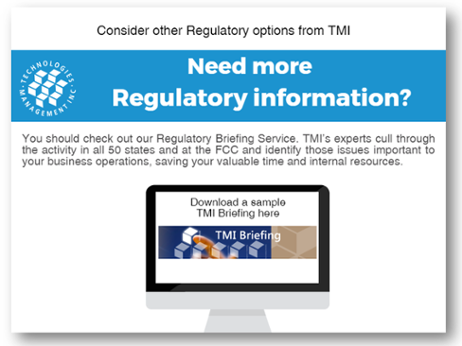 What will the FCC be tackling next? Here is what is queued up for the January Open Meeting.
What will the FCC be tackling next? Here is what is queued up for the January Open Meeting.
Chairman Pai said the FCC is “hitting the ground running in 2018,” with an ambitious agenda that includes the long-awaited finalization of the plans for the Connect America Fund Phase II (CAF II) Auction. The reverse auction will make up to $2 billion available over the next decade to bring fixed broadband service to unserved parts of rural America. The FCC will also consider an order creating a new Office of Economics and Analytics, an office the Chairman says will “at long last put economic analysis at the heart of Commission decision-making.” The FCC will also be considering an item that would enhance the effectiveness of Wireless Emergency Alerts as well as several media items. An important agenda! So, let’s take a closer look at some of the issues the FCC will be addressing.
CAF II Auction: The Public Notice would finalize the bidding procedures for the auction. Short form applications (FCC Form 183) would have to be filed by March 30, 2018; the auction itself would be held on July 24, 2018. Census block groups would be the minimum geographic area in which areas eligible for support could be grouped for bidding in the auction. The Public Notice also adopts final requirements for:
- the pre-auction short-form application to ensure applicants are technically and financially qualified to participate in the auction; and
- the long form application from winning bidders to ensure they demonstrate they are technically and financially qualified to meet the relevant Phase II auction public interest obligations in the areas where they will be awarded support.
- Calculates reserve prices using the Connect America Cost Model (CAM) to ensure that no high-cost census block will receive more Phase II support than the CAM calculates is necessary.
- Caps the amount of support per location provided to extremely high-cost census blocks;
- Adopts a simplified multi-round, descending clock auction. As the clock descends, bidders will indicate whether they will bid to provide service to an area at a given performance tier and latency. Support will be assigned to no more than one bidder per area. The auction will end after the aggregate support amount of all bids is less than or equal to the total budget and there is no longer competition for support in any area.
CAF II Rules Reconsideration: This Order will resolve outstanding petitions challenging prior FCC orders setting the ground rules for the auction. Among other things, the FCC declined to:
- reconsider the weights previously adopted for bids in the Phase II auction for the varying performance tiers and latency levels;
- reconsider the requirement that recipients of CAF funding offer stand-alone voice service (although they will be allowed to offer VoIP over their broadband network on a standalone basis so long as the offerings are at the reasonably comparable rate for voice services);
- change the deployment and eligibility rules; and
- automatically qualify entities selected as provisional winning bidders in the rural broadband experiment program to participate in the Phase II auction.
The Order does modify the letter of credit rules to allow recipients to reduce the value (and thus the cost of maintaining) their letters of credit once they have met the 80% service milestone.
Office of Economics and Analytics (OEA): The proposed order would create a new Office consisting of four different divisions. The Economic Analysis Division would work closely with staff across the FCC’s bureaus and offices on rulemakings, adjudications, transaction reviews and related activities that require economic analysis. The Industry Analysis Division would collect and analyze key data sets that the agency relies on to understand market trends. The Auctions Division would be charged with structuring the auctions run by the FCC for market based allocations of public resources, including wireless spectrum, federal broadband subsidies, and radio licenses. Finally, the Data Division would aim to ensure that data can be shared, compared, and analyzed across different bureaus to better inform the FCC’s work.
Wireless Emergency Alerts (WEAs): These alerts deliver public safety warnings to consumers’ cell phones and other mobile devices. The proposed order seeks to more precisely target these alerts by requiring participating wireless providers to deliver alerts to match the geographic area specified by the officials sending the alert with no more overshoot than one-tenth of a mile. The proposal would also require that, effective November 30, 2019, WEA-capable devices preserve alert messages in a consumer-accessible format and location for at least 24 hours after the alert is received. The Order also aligns the effective date for supporting Spanish-language alert messages with the deadline for extending the length of alert messages from 90 to 360 characters. As such, the new compliance deadline for supporting Spanish-language alerts would be May 1, 2019.
This meeting will not bring nearly the excitement of the December meeting, but will significantly advance the cause of closing the digital divide by facilitating the deployment of broadband service to rural areas. #CheckingIn@TheFCC




